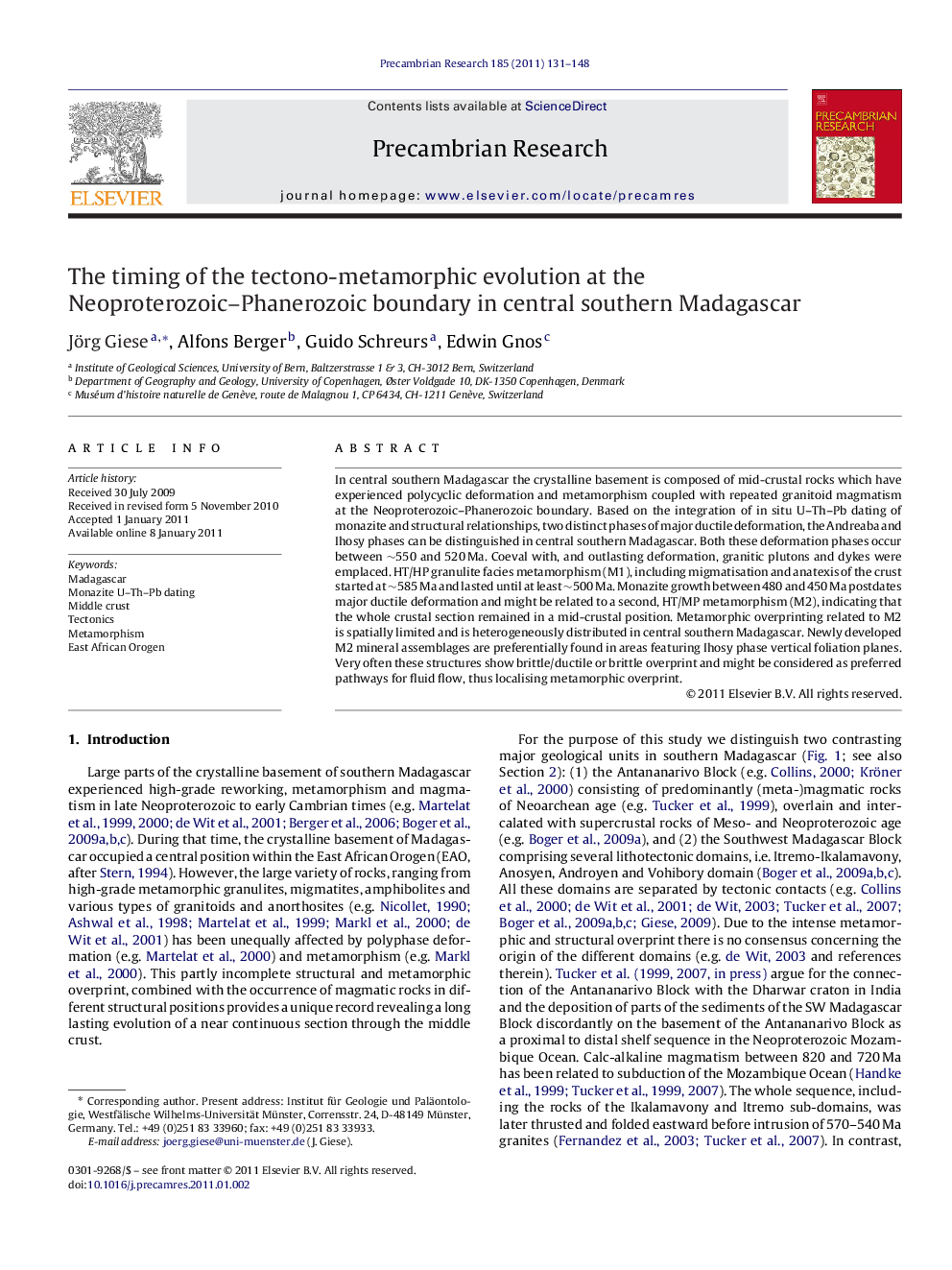| Article ID | Journal | Published Year | Pages | File Type |
|---|---|---|---|---|
| 6442406 | Precambrian Research | 2011 | 18 Pages |
Abstract
In central southern Madagascar the crystalline basement is composed of mid-crustal rocks which have experienced polycyclic deformation and metamorphism coupled with repeated granitoid magmatism at the Neoproterozoic-Phanerozoic boundary. Based on the integration of in situ U-Th-Pb dating of monazite and structural relationships, two distinct phases of major ductile deformation, the Andreaba and Ihosy phases can be distinguished in central southern Madagascar. Both these deformation phases occur between â¼550 and 520Â Ma. Coeval with, and outlasting deformation, granitic plutons and dykes were emplaced. HT/HP granulite facies metamorphism (M1), including migmatisation and anatexis of the crust started at â¼585Â Ma and lasted until at least â¼500Â Ma. Monazite growth between 480 and 450Â Ma postdates major ductile deformation and might be related to a second, HT/MP metamorphism (M2), indicating that the whole crustal section remained in a mid-crustal position. Metamorphic overprinting related to M2 is spatially limited and is heterogeneously distributed in central southern Madagascar. Newly developed M2 mineral assemblages are preferentially found in areas featuring Ihosy phase vertical foliation planes. Very often these structures show brittle/ductile or brittle overprint and might be considered as preferred pathways for fluid flow, thus localising metamorphic overprint.
Related Topics
Physical Sciences and Engineering
Earth and Planetary Sciences
Geochemistry and Petrology
Authors
Jörg Giese, Alfons Berger, Guido Schreurs, Edwin Gnos,
